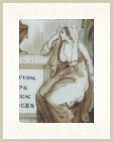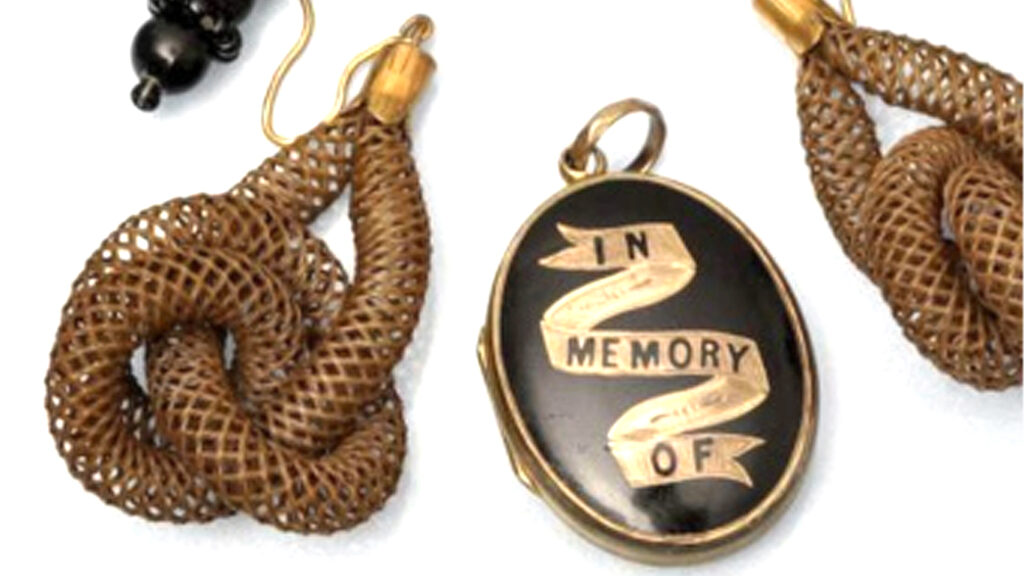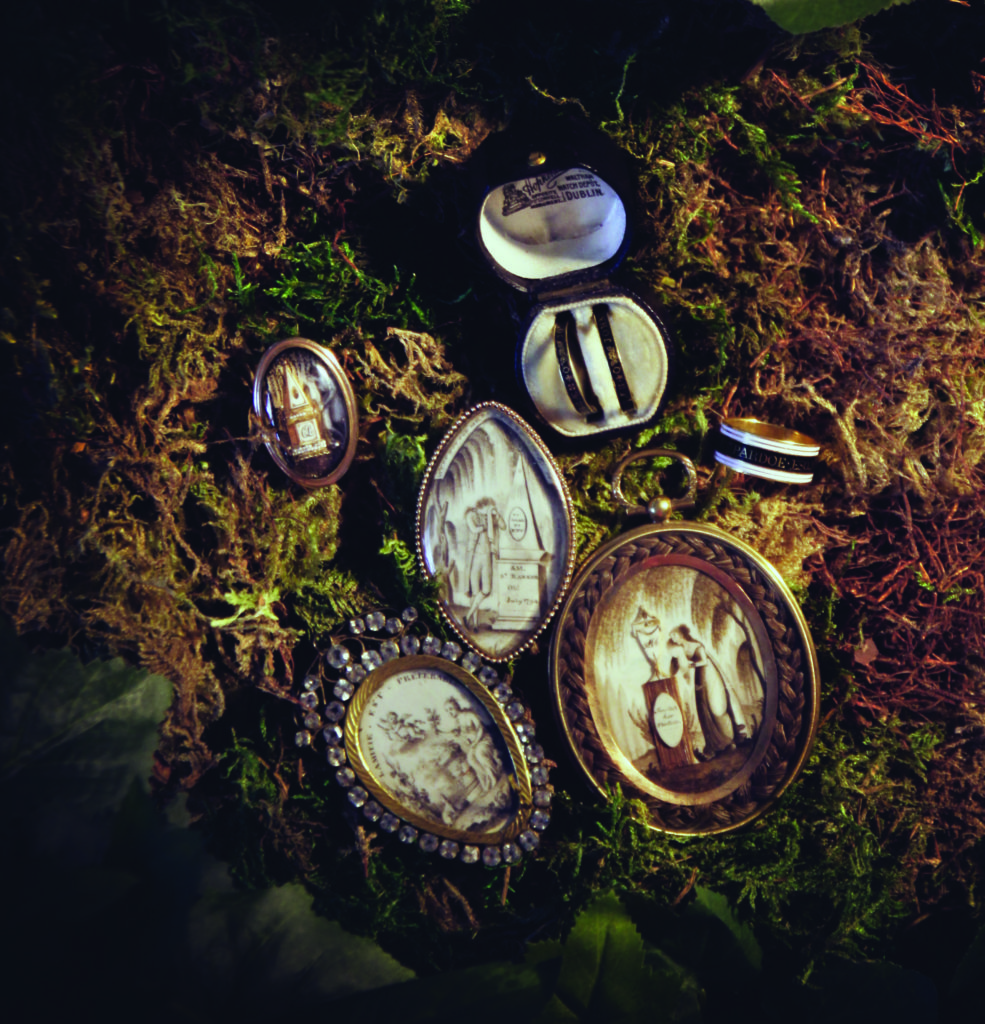Textiles: 18th Century, Part 1
The 18th century welcomed in greater convention for mourning fashion and began to see the rise of the mourning industry. This became so much so that mourning dress was becoming desirable and the difference between mourning and non mourning dress was narrowing. Much of the fashion in this century was dictated by the fabric rather than the cut, and the silk industries in France and England held major influence on mourning wear because of this. It was Ordre Chronologique des Deuils de la Cour, (1765) where details of Court mourning in France were published, giving precise tailoring instructions. From their first days in mourning, men were permitted to appear in Court, unless it was after the death of a parent from whom they had received inheritance.
Widows had to wait one year and six weeks, with the first six months in black wool. Lord Chamberlain and Earl Marshall both ordered shorter periods of mourning in France and England respectively. By the 1880s in Britain, twelve weeks of mourning were ordered by the death of a king or queen, six weeks after the death of a son or daughter of the sovereign, three weeks for the monarch’s brother or sister, two weeks for royal nephews, uncles, nieces or aunts and ten days for the first cousins of the royal family. Foreign sovereigns were mourned for three weeks and their relatives for a shorter time. Mourning was divided up into First, Second and Court mourning.
As in the 17th century, black and plain were required. Bombazine dresses trimmed in black crape, black silk hoods and plain white linen were worn with black shammy leather shoes, glove and crape fans. Jewellery was not permitted. Second mourning consisted of black dresses, trimmed with fringed or plain linen, white gloves, black or white shoes, fans and tippets and white necklaces and earrings as necessary. Grey lusterings, tabbies and damasks were acceptable for less formal occasions.
Ordre Chronologique des Deuils de la Cour was specific and influential enough to decide upon women’s fashions, as. It was specific enough to specify that; ‘dress was cut with a train and turned back with a braid attached to the side of the skirt, which was pulled through the pockets.’ This is where the overskirt is turned to the back and lifted up, revealing the petticoat underneath, called; robe retrousee dans les poche, the centre front robings were joined with hooks or ribbons. Cuffs were cut with one fold and deep hems, the waist was held in place by a crape belt that was tied on. This left two ends hanging down to the hem of the skirt.
A woman’s accessories were a crape shawl, gloves, shoes with metallic bronzed buckles, a black woolen muff and a black crape fan. Head dresses of black crape and white batiste were referenced. For much of the century, however, ‘paniers’ were fashionable, but in the French style, with loose pleating falling from the shoulders to the back. The English manner of this was with the back pleats stitched down as far as the waistline. Also popular were lace ruffles at the neck and the cuff, embroidered stomachers, silver gilt lace, appliqué work and small aprons. None of these were permitted for mourning wear. Mourning wear for women still remained consistent in that it remained plain, black or sometimes white fabric.








